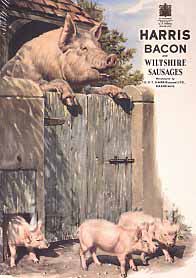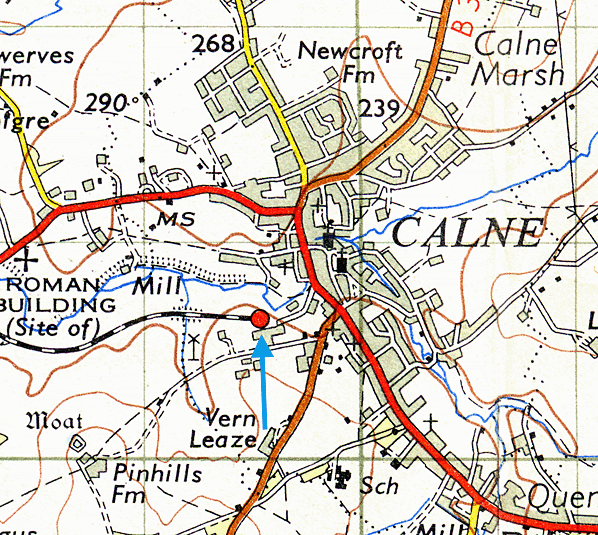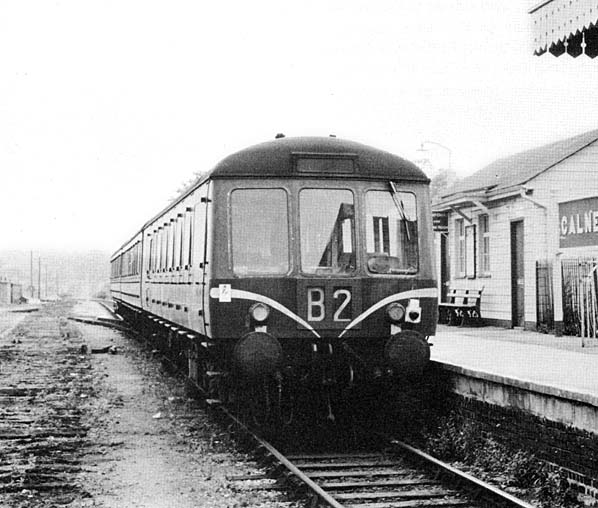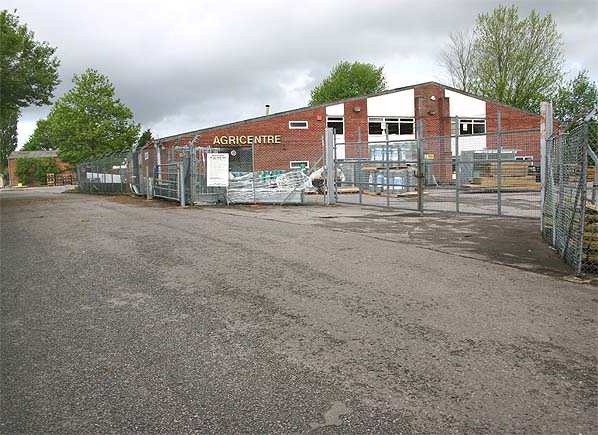|
Notes: Calne Station was known as the home station for the
Harris bacon factory, its main customer. Pigs would be brought
into the station on train and transported to the factory,
before the products were taken back to the station and sent
to destinations across the UK
The platform at Calne was on the north side of the line. New
sidings and a loading platform were added during WW1 and the
passenger platform was extend up to the water tank during
1942 as the station carried heavy military traffic for the
two neighbouring RAF bases.
There was a milk dock with a loading gauge opposite the passenger
platform and behind this the stone built goods shed. A loading
platform with wooden animal pens ran for much of the length
of the goods yard.
A private siding was built at the rear of the goods shed in
1927 to serve the Harris Bacon Factory; this had its own loading
platform. At one time 20 loaded trucks were dispatched on
a normal working day. The siding gave access to Harris's private
goods yard.
BRIEF HISTORY OF THE CALNE
RAILWAY
 |
The railway was originally brought to Calne
by the inability of the once-prosperous Calne branch of
the Wilts
and Berks Canal to cope efficiently with the requirements
of local industry. As demand grew across the country for
products from the Harris
Bacon Factory, Calne's main employer at the time,
it became clear that a modern transport system was needed.
On 8th November 1859, the first meeting to discuss opening
a branch line from the GWR at Chippenham to Calne was
held. The Calne Railway Company was formed and Parliament
granted the necessary Act on 15th May 1860.
With no tunnels required, the construction of the line
was simple and was built in the broad gauge of 7' 0½"
opening to freight traffic on 29th October 1863. |
The line was then opened to passengers from 3rd November,
1863, an unofficial holiday in Calne. From the start the service
was operated by the Great Western Railway on behalf of the
Calne Railway Company.
Initially there were no intermediate stations on the line
but a private station was opened at Black Dog Siding for Lord
Lansdowne in 1863 and a halt was opened at Stanley Bridge
in 1905 with the introduction of steam railcars onto the branch.
In August 1874 the line was converted to standard gauge. The
independent Calne Railway Company was absorbed into the GWR
in 1892.
Both fright and passenger traffic was good and continued to
improve through the later years of the 19th century and in
1895 the terminus at Calne underwent extensive renovations
and enlargement. The steam railcars were withdrawn from the
branch in the mid 1930's.
The passenger station was used during WW2 to transport both
servicemen and equipment to the Royal Air Force bases at Compton
Bassett and Yatesbury and the goods station also saw increased
trade with an increase in coal traffic, fuel for the RAF stations
and animal feeds and grain for the local millers. The line
had two near misses during German bombing raids in the Second
World War, when bombs fell close to the station and the tracks.
The line was still producing a good profit in the 1950s. Figures
for the year ending September 1952, showed an income of more
than £150,000, with 300,000 passengers. However, as
the Harris factory began to use the roads to transport more
of its products, the railway began to see a drop in revenue.
DMU's were brought onto the line in September 1958.
Following the closures of the RAF stations at Yatesbury and
Compton Bassett, passenger numbers diminished rapidly and
by late 1963, freight services had been cut to one a weekday,
while Sunday passenger services had been withdrawn. Freight
services were withdrawn on 2nd November 1964 and the end was
inevitable with Calne finally losing its passenger service
during the Beeching cuts closing on 18th September 1965.
Most of track was lifted between Easter and June 1967 leaving
just a short section near the junction which was used as a
siding. By 1972 a section of the track had been opened up
to the public as the Marden Nature Trail and today most of
the 6 mile route between Chippenham and Calne is part of the
National Cycle Network and known as the Chippenham/Calne Railway
Path.
Sources: Swindon
Advertiser and 'The
Calne Branch" by G Tanner published by Oxford Publishing
Company 1972 ISBN 902088 0 72
To see the
other stations on the Calne Railway click on the station name:
Black Dog Halt
& Stanley
Bridge Halt
|




 Home
Page
Home
Page

old4.jpg)
old_thumb6.jpg)
old_thumb3.jpg)
old_thumb2.jpg)

old_thumb5.jpg)

